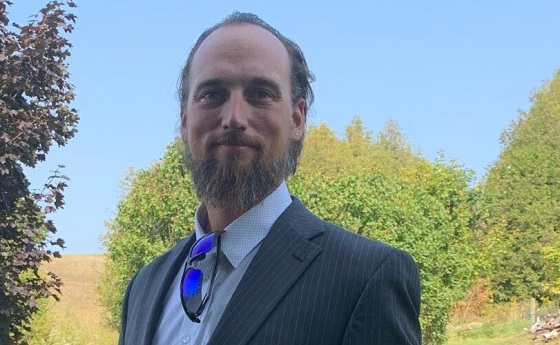COVID-19
Dr. Fauci’s Lieutenant on the Hot Seat

From the Brownstone Institute
BY
In a moment of rare bipartisan denunciation, Democrat Representative Kweisi Mfume (D-MD) confronted Dr. David Morens, longtime advisor to Dr. Fauci: “Sir, I think you’re going to be haunted by your testimony today.”
Dr. Morens, a senior scientific advisor at the National Institute of Allergy and Infectious Diseases (NIAID), has been embroiled in controversy following revelations of his attempts to seemingly conceal embarrassing information about his personal friend and NIH grant recipient, Dr. Peter Daszak, President of EcoHealth Alliance. Morens’s attempts to evade Freedom of Information Act (FOIA) requests laid bare yesterday in front of the Select Committee on Covid-19 were eye-opening and disturbing.
Dr. Morens frequently used his personal email to conduct official business, explicitly to avoid FOIA scrutiny. He emailed a colleague in May 2020: “So you and Peter and others should be able to email me on gmail only.”

In other uncovered correspondence, Dr. Morens openly discussed methods to delete federal records to prevent their release under FOIA: “I learned from our FOIA lady here how to make emails disappear after I am FOIAed, but before the search starts, so I think we are all safe. Plus I deleted most of those earlier emails after sending them to Gmail.”

In one particularly shocking email, Dr. Morens asked Dr. Peter Daszak for monetary reimbursement—specifically a “kickback”—for his assistance in editing EcoHealth Alliance’s grant compliance efforts. Although this allegation has yet to be confirmed, the email reads: “…do I get a kickback???? Too much fooking money!”

Under testimony, Dr. Morens claimed that this was simply “black humor” and “joking” with his friend Peter Daszak—who is now under disbarment from NIH grants following serious mismanagement of grants to his company EcoHealth Alliance.
In addition to Dr. Morens’s FOIA endrun revelations, the emails also contained unprofessional and misogynistic comments. He seemingly disparaged CDC Director Rochelle Walensky attributing her appointment to her sex: “Well, she does wear a skirt…”
Representative Mary Miller-Meeks (R-IO) confronted Dr. Morens on these issues: “You’re trusted with one of the highest positions in government to combat public health crises. And instead of doing your job, you’re too busy worried about avoiding FOIAs and challenging someone’s position because they happen to wear a skirt.”
Morens apologized but seemed to downplay the significance of his comments: “…it was the same snarky, joking stuff.” But Rep. Miller-Meeks was having none of it. She interrupted: “That’s not a snarky joke. That is an underlying behavior that indicates how you approach women and how you think of women, and it’s disgusting.”
At the heart of the matter is what Dr. Morens was doing to hide information to protect Peter Daszak and even Dr. Fauci from embarrassing revelations of their actions during the Covid-19 pandemic. In emails, Morens discussed back-channeling information to Dr. Fauci to avoid FOIA requests: “I can either send stuff to Tony on his private gmail, or hand it to him…” Confronted by these emails, Morens dismissed them: “There are some elements of this that I don’t think are being understood.”
Additional emails further reveal Fauci’s involvement in offline communications, potentially undermining US government operations by assisting Dr. Morens’s efforts to share internal NIH information with Dr. Peter Daszak.
For instance, Dr. Morens shared confidential information marked (For Official Use Only) with Daszak: “Please feel free to share any docs that I’ve sent to you, with Tony. Hopefully, you can do that in a way that avoids FOIA, and if not possible, just show him stuff on screen share on Zoom.”
Dr. Morens and Dr. Fauci have collaborated and co-authored numerous papers and articles over the years but Morens seemed to downplay his relationship with Dr. Fauci: “I never gone out with him to have a beer.”
Representative Michael Cloud (R-TX) read the email regarding the “FOIA lady” instructing him on how to avoid the information requests. Morens objected: “She gave me [no info] about avoiding FOIA.” Cloud pushed back: “So you were lying then but you’re telling us the truth now?” Morens dug deeper: “I was making a joke with Peter, I said something like ‘I have a way to make it go away’ but that was just a euphemism.”
These past few weeks have been busy for the Select Committee of Covid-19, headed by Rep. Brad Wenstrup (R_OH). They have long requested the disbarment of EcoHealth Alliance and Peter Daszak from the NIH, and the US Department of Health and Human Services (HHS) has initiated formal proceedings. The May 15, 2024 memorandum from HHS underscores the severity of EcoHealth’s compliance failures, emphasizing the need for exacting oversight in public health research.
As background to all of this, the ideological framework that Fauci and Morens have consistently promoted over two decades of co-authorship gives some color commentary on where the stringent pandemic policies originated. Their collaboration began with largely technical papers on infectious diseases, yet over time, their recommendations expanded significantly in ambition.
Their earliest publications together (which started in 2004) seemed to show cautious optimism for tackling infectious diseases without breaching individual rights or governance norms. By 2007, their tone had noticeably shifted. In an article on the 1918 Spanish flu pandemic, they warned against complacency and hinted at the necessity for heightened vigilance.
In their 2012 work, “The Perpetual Challenge of Infectious Diseases,” they moved even further, declaring eradication—rather than just mitigation—as the new goal, emphasizing a radical new approach to managing infectious diseases.
Their evolution was cemented in a 2016 article on the Zika Virus. In it, they posited that human behaviors and modern societal structures were significant contributors to the emergence of diseases.
…in our human-dominated world, urban crowding, constant international travel, and other human behaviors combined with human-caused microperturbations in ecologic balance can cause innumerable slumbering infectious agents to emerge unexpectedly. In response, we clearly need to up our game…
The implications of crowds spreading sickness are not new, but the corollary here is that human actions need strict regulation to prevent future outbreaks, a policy evolution that would have significant impacts just four years down the line.
The culmination of these ideas appeared starkly in their widely-cited 2020 “Cell Magazine” article in the midst of the Covid-19 pandemic. Here, Fauci and Morens argued for transformative changes in human behavior and infrastructure to live “in greater harmony with nature.” They contended that human behaviors fundamentally disrupt the “human-microbial status quo,” leading to disease outbreaks.
This article was a watershed, revealing their vision of a restructured society to prevent pandemics—an ideological stance that has drawn criticism for its potentially authoritarian overtones.
Fauci and Morens’s advocacy for “rebuilding the infrastructures of human existence” was more than a scientific proposal; it was a call for a societal overhaul.
They seem to pine for yesteryear without all the hustling and bustling: “Since we cannot return to ancient times, can we at least use lessons from those times to bend modernity in a safer direction?”
Nothing epitomizes the US Government’s response to the pandemic like the loaded phrase: “bend modernity in a safer direction.”
Now, with Dr. Morens’s skirting FOIA requests and promoting ways to “[make] it all go away” – the hubris is laid bare for all to see.
The deceitful actions of Drs. Morens, Daszak, and Fauci, their evasion of FOIAs, and their backroom dealings have severely undermined public trust. As these revelations come to light, it is crucial for us to demand greater transparency and integrity from our public health officials. Only then can we restore faith in our health institutions and ensure they truly serve the public good.
Republished from the author’s Substack
COVID-19
Judge denies Canadian gov’t request to take away Freedom Convoy leader’s truck

From LifeSiteNews
A judge ruled that the Ontario Court of Justice is already ‘satisfied’ with Chris Barber’s sentence and taking away his very livelihood would be ‘disproportionate.’
A Canadian judge has dismissed a demand from Canadian government lawyers to seize Freedom Convoy leader Chris Barber’s “Big Red” semi-truck.
On Friday, Ontario Court of Justice Judge Heather Perkins-McVey denied the Crown’s application seeking to forfeit Barber’s truck.
She ruled that the court is already “satisfied” with Barber’s sentence and taking away his very livelihood would be “disproportionate.”
“This truck is my livelihood,” said Barber in a press release sent to LifeSiteNews.
“Trying to permanently seize it for peacefully protesting was wrong, and I’m relieved the court refused to allow that to happen,” he added.
Criminal defense lawyer Marwa Racha Younes was welcoming of the ruling as well, stating, “We find it was the right decision in the circumstances and are happy with the outcome.”
John Carpay, president of the Justice Centre for Constitutional Freedoms (JCCF), said the decision is “good news for all Canadians who cherish their Charter freedom to assemble peacefully.”
READ: Freedom Convoy protester appeals after judge dismissed challenge to frozen bank accounts
“Asset forfeiture is an extraordinary power, and it must not be used to punish Canadians for participating in peaceful protest,” he added in the press release.
As reported recently by LifeSiteNews, the Canadian government claimed that Barber’s truck is an “offence-related property” relating to his involvement in the 2022 protests against Canada’s COVID mandates.
At this time, the court ruling ends any forfeiture proceedings for the time being, however Barber will continue to try and appeal his criminal conviction and house arrest sentence.
Barber’s truck, a 2004 Kenworth long-haul he uses for business, was a focal point in the 2022 protests. He drove it to Ottawa, where it was parked for an extended period of time, but he complied when officials asked him to move it.
On October 7, 2025, after a long trial, Ontario Court Justice Perkins-McVey sentenced Barber and Tamara Lich, the other Freedom Convoy leader, to 18 months’ house arrest. They had been declared guilty of mischief for their roles as leaders of the 2022 protest against COVID mandates, and as social media influencers.
Lich and Barber have filed appeals of their own against their house arrest sentences, arguing that the trial judge did not correctly apply the law on their mischief charges.
Government lawyers for the Crown have filed an appeal of the acquittals of Lich and Barber on intimidation charges.
The pair’s convictions came after a nearly two-year trial despite the nonviolent nature of the popular movement.
COVID-19
Freedom Convoy protester appeals after judge dismissed challenge to frozen bank accounts

From LifeSiteNews
Protestor Evan Blackman’s legal team argues Trudeau’s Emergencies Act-based bank account freezes were punitive state action tied directly to protest participation.
A Freedom Convoy protester whose bank accounts were frozen by the Canadian government says a judge erred after his ruling did not consider the fact that the funds were frozen under the Emergencies Act, as grounds for a stay of proceedings.
In a press release sent out earlier this week, the Justice Centre for Constitutional Freedoms (JCCF) said that Freedom Convoy protestor Evan Blackman will challenge a court ruling in his criminal case via an appeal with the Ontario Superior Court of Justice.
“This case raises serious questions about how peaceful protest is treated in Canada and about the lasting consequences of the federal government’s unlawful use of the Emergencies Act,” noted constitutional lawyer Chris Fleury. “The freezing of protestors’ bank accounts was part of a coordinated effort to suppress dissent, and courts ought to be willing to scrutinize that conduct.”
Blackman was arrested on February 18, 2022, during the police crackdown on Freedom Convoy protests against COVID restrictions, which was authorized by the Emergencies Act (EA). The EA was put in place by former Prime Minister Justin Trudeau’s Liberal government, which claimed the protests were violent, despite no evidence that this was the case.
Blackman’s three bank accounts with TD Bank were frozen due to his participation in the Freedom Convoy, following a directive ordered by Trudeau.
As reported by LifeSiteNews, in November of this year, Blackman was convicted at his retrial even though he had been acquitted at his original trial. In 2023, Blackman’s “mischief” and “obstructing police” charges were dismissed by a judge due to lack of evidence and the “poor memory of a cop regarding key details of the alleged criminal offences.”
His retrial resulted in Blackman getting a conditional discharge along with 12 months’ probation and 122 hours of community service, along with a $200 victim fine surcharge.
After this, Blackman’s application for a stay of proceedings was dismissed by the court. He had hoped to have his stay of proceedings, under section 24(1) of the Charter of Rights and Freedoms, allowed. However, the judge ruled that the freezing of his bank accounts was legally not related to his arrest, and because of this, the stay of proceedings lacked standing.
The JCCF disagreed with this ruling, noting, it “stands in contrast to a Federal Court decision finding that the government’s invocation of the Emergencies Act was unreasonable and violated Canadians’ Charter rights, including those targeted by the financial measures used against Freedom Convoy protestors.”
As of press time, a hearing date has not been scheduled.
In 2024, Federal Court Justice Richard Mosley ruled that Trudeau was “not justified” in invoking the Emergencies Act.
In early 2022, the Freedom Convoy saw thousands of Canadians from coast to coast come to Ottawa to demand an end to COVID mandates in all forms. Despite the peaceful nature of the protest, Trudeau’s federal government enacted the EA in mid-February.
After the protesters were cleared out, which was achieved through the freezing of bank accounts of those involved without a court order as well as the physical removal and arrest of demonstrators, Trudeau revoked the EA on February 23, 2022.
-

 Automotive12 hours ago
Automotive12 hours agoPoliticians should be honest about environmental pros and cons of electric vehicles
-

 Agriculture2 days ago
Agriculture2 days agoWhy is Canada paying for dairy ‘losses’ during a boom?
-

 Agriculture2 days ago
Agriculture2 days agoCanadians should thank Trump for targeting supply management
-

 Business2 days ago
Business2 days agoCanada Hits the Brakes on Population
-

 Daily Caller2 days ago
Daily Caller2 days ago‘Almost Sounds Made Up’: Jeffrey Epstein Was Bill Clinton Plus-One At Moroccan King’s Wedding, Per Report
-

 Crime2 days ago
Crime2 days agoBrown University shooter dead of apparent self-inflicted gunshot wound
-

 Business2 days ago
Business2 days agoTrump signs order reclassifying marijuana as Schedule III drug
-

 Bruce Dowbiggin23 hours ago
Bruce Dowbiggin23 hours agoHunting Poilievre Covers For Upcoming Demographic Collapse After Boomers






